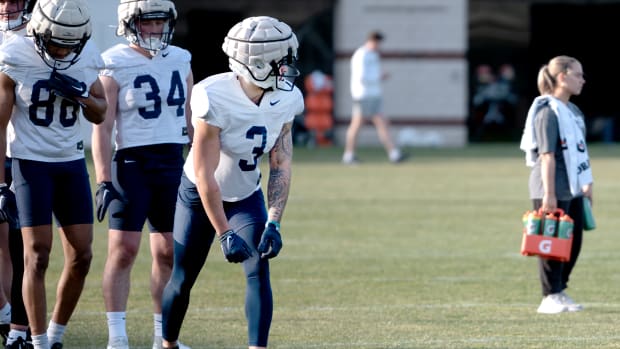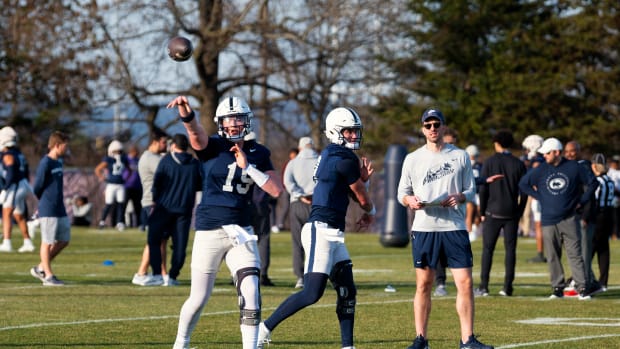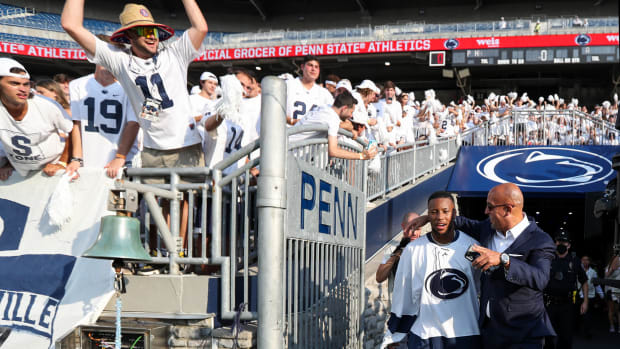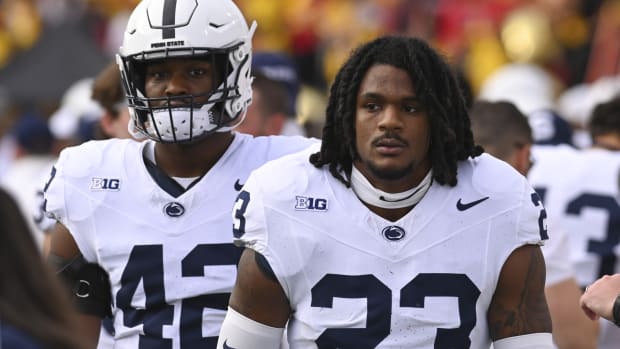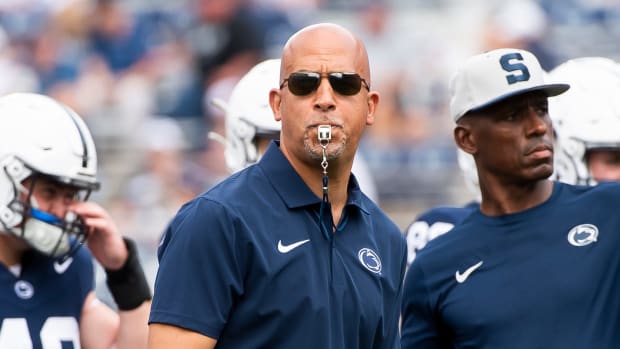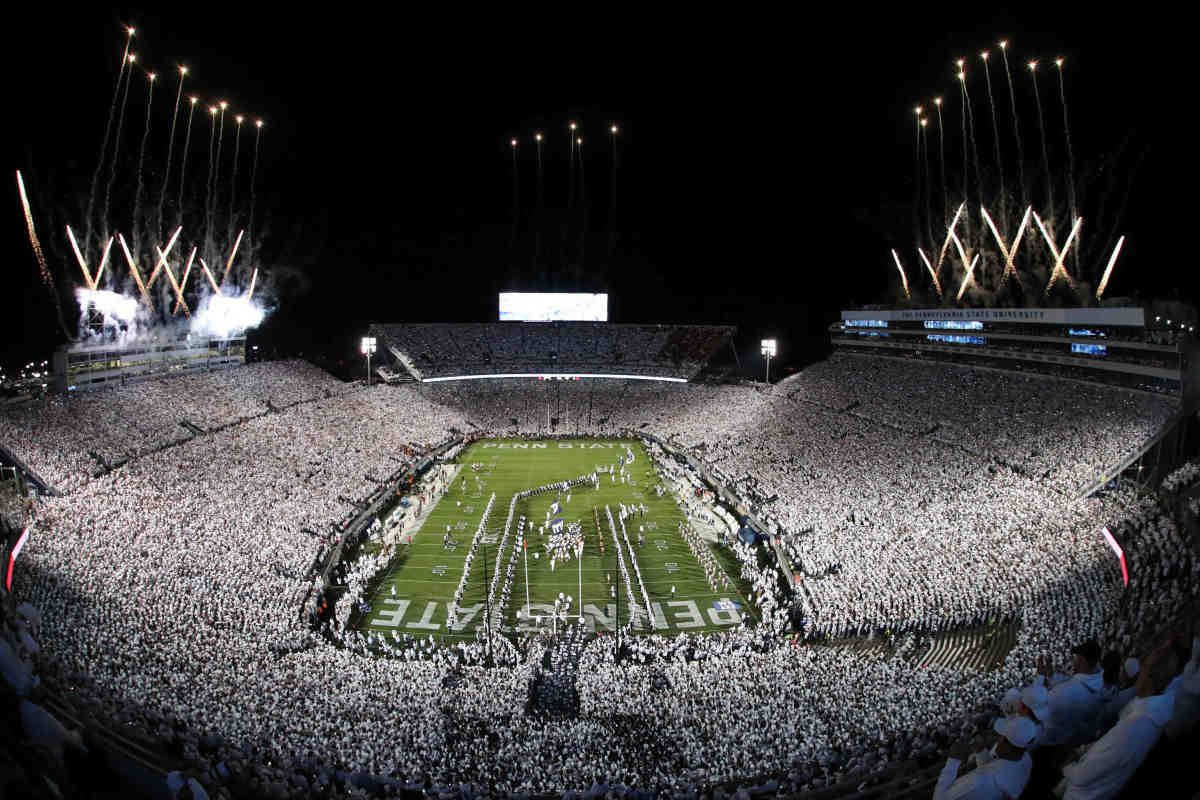
Big Ten Expansion, Penn State and the Future
The new world of college athletics began in 1989, when Penn State officials, including president Bryce Jordan and football coach Joe Paterno, pitched an idea: We should join the Big Ten.
Thirty-four years later, Penn State is firmly rooted, yet somehow still an outsider, in the Big Ten, which continues to grow. The Big Ten announced Friday that it will add Oregon and Washington for the 2024-25 athletic season, one already planned for the debut of USC and UCLA. By inviting Oregon and Washington, the Big Ten essentially finished the Pac-12 teardown it began upon peeling USC and UCLA from the conference in 2022.
The Big Ten's welcome for the West Coast schools was "unanimous," as former commissioner Kevin Warren said last year, and measured through an "extremely clear" alignment with current members, as Illinois Chancellor Robert Jones said in announcing the Oregon and Washington additions. In other words, the process went much smoother than what took place in 1990, when a welcoming party didn't greet Penn State. That year, three Big Ten schools (Michigan, Michigan State and Indiana) voted against Penn State joining the conference.
Penn State never received a warm embrace from the conference. Former Illinois president Stanley Ikenberry, with whom that Penn State contingent met in 1989, recalled the vote as being a "complete insurrection." Further, then-Indiana president Tom Ehrlich told told Pennlive's David Jones for the same 2010 story that his 'No' vote represented several clear issues.
"I voted ‘No’ because I felt that our teams traveling to Penn State was just too long a trip," Ehrlich told Jones in an interview. "I listened to the benefits as far as money from TV. But I thought the primary thing was supporting our intercollegiate athletes. And to schlep to State College, well, it’s not easy to get there.”
Now, the Big Ten media rights money tops $1 billion per year, its football teams will play on three broadcast networks, and teams are going to fly across three time zones for midweek basketball and soccer games. Meanwhile, the new 18-team Big Ten will celebrate because it's out front of college athletics' fundamental reshaping.
As Penn State coach James Franklin said recently, "There are two real conferences I think are built in a way not only to be the most successful but be able to sustain it long term. We’re fortunate to be in one of those conferences."
College football can thank (or blame) Penn State in part for the paradigm shift it continues to undergo. Penn State forever changed the Big Ten Conference. So how will this latest move, and potential future additions, affect Penn State? Some thoughts.
$$$$$$$$$$
Penn State needs cash. It has to pay James Franklin's 10-year deal, is spending $90 million on athletics upgrades, has made major financial commitments to basketball and baseball and must fund complicated new all-sports travel schedules. And then there's Beaver Stadium, to which the Board of Trustees recently committed the first $70 million toward a planned four-year, $700 million renovation.
The Big Ten's seven-year media rights deal, which began in August, could infuse the athletic department with an average annual payment of $70 million. And that's just for media rights. It doesn't include revenue from the forthcoming College Football Playoff, the NCAA basketball tournaments or shared bowl payouts. The Big Ten is offering financial stability that allows programs like Penn State to re-invest.
Penn State's athletic department navigated the pandemic better than other schools, having recovered from the $23.9 million budget deficit it reported for fiscal year 2021. In its last fiscal year, Penn State athletics reported a nearly $10.7 million surplus after generating a record $181 million in operating revenue. In a few years, Penn State athletics could be reporting $200 million in revenue. That will lift all 31 sports.
The Lions are 'Unrivaled' anyway
What program is better positioned to attack the new world of college football that de-emphasizes regional rivalries than the one whose marketing slogan literally is "Unrivaled"'?
Penn State historically built its rivals through Eastern independence and has been reticent to generate much sports hatred in the Big Ten. Sure, Ohio State is a rival from Penn State's perspective, and Penn State is a rival from Maryland's perspective. But nine years after making #Unrivaled a branding hashtag, Penn State all but had it written into the Big Ten bylaws.
When the Big Ten issued schedules for its 16-team model in June, Penn State was the only team without a "protected opponent," or rivalry game. Though that schedule is scrapped now, the framework is unlikely to change, nor does Penn State want it to change. Penn State is perfectly content playing the role of independent within a conference, giving it both status and individuality. As Franklin asked recently, why does Penn State need a designated rival?
"I think there seems to be a lot of people trying to create those things," said the head coach, entering his 10th season at Penn State. "And it’s funny, when I first got to Penn State and they were having this discussion about unrivaled. Well, why? We're not an original Big Ten team. We were independent for a long time. Then you join the conference, and then people try to create rivalries that weren't really there. Just like everybody wanted to tell me about our rivalry with Pitt. Which I agree with geographically, but literally, up to when we played them a few years ago, none of our players have ever seen a Penn State-Pitt rivalry game in their lifetime. So I just think these games are important. They’re big games, they’re important for the Big Ten, they're important for our teams individually as well. But to me, there shouldn't have to be a discussion on, 'Is this team a rival or not?' If they're a rival, everybody knows they are, in my opinion."
Penn State fans might lament losing the annual game against Ohio State (or maybe not, considering Franklin's 1-8 record against the Buckeyes) but will get fired up about hosting USC for a welcome-to-the-Big-Ten Whiteout. Penn State and USC have played 10 times but only twice each in true home games. Their last meeting, USC's 52-49 victory in the 2017 Rose Bowl, was an all-time classic.
Speaking of the Rose Bowl, Penn State can claim victory in what likely will be the last Big Ten vs. Pac-12 "Granddaddy of Them All."
New recruiting territories
Among the more fascinating players on Penn State's 2023 roster is Vega Ioane, a 350-pound offensive lineman who could challenge for a starting role. Position coach Phil Trautwein said Ioane "will be an NFL guy for sure." Ioane is from Graham, Washington, located south of Seattle and Tacoma, squarely in Washington and Oregon's recruiting footprint. Special teams coach Stacy Collins, who coached at schools in Washington and Oregon, was instrumental in recruiting Ioane to State College.
Penn State has stretched its traditional recruiting boundaries significantly under Franklin, especially trying to gain a foothold in Florida and other regions in the South. That requires resources. And the Big Ten's addition of four West Coast schools gives Franklin a reason to ask for further recruiting-budget increases.
"These last couple recruiting classes were more national," said Andy Frank, Penn State's general manager of personnel and recruitment. "We’re not necessarily going to sign a huge percentage of kids nationally but we’re able to cast a bigger net. And when you cast a bigger net, and you’re selective in the kids you’re signing, that’s probably the biggest area where numbers [on the recruiting staff] help us, from my perspective."
Now's the time for Penn State to cast that wider net, particularly into California. Two years ago, former SI analyst Jim Mora, Jr., now the head coach at Connecticut, suggested that Penn State start chasing the quarterback talent in California more vigorously.
"You have to be able to come out to California and find some of these young, talented guys that are now going to Alabama and Ohio State and places like that," Mora said in an interview. "And you have to convince them to come to Penn State and be a difference-maker."
A potential scheduling tradeoff
Like most Penn State fans, Franklin wants to confine Beaver Stadium home games to Saturdays. He'll acquiesce to the occasional Friday-night road game, like the Lions will play against Michigan State in Detroit, but remains a scheduling traditionalist. He might have to update that belief.
With 18 teams and an expanded inventory of games, the Big Ten must get creative with scheduling. It already has by ceding to NBC's November night-game requirement, for which four West Coast teams will provide relief. Still, Penn State and the Big Ten's historical powers might have to accept more Friday-night games, particularly if a new media partner enters (or re-enters) the scene. Media partners paying more will demand more. To cash those checks, Penn State and its 17 partners must compromise. Which means Beaver Stadium just might host a Thursday-night game in the next decade.
More on Penn State
Big Ten scheduling should focus on the playoff, James Franklin says
'There is no ceiling here,' Penn State AD Patrick Kraft says of the school's athletics future
James Franklin's 10th training camp at Penn State could be his most fascinating
Expectations are high for Penn State in 2023. But are they realistic?
Breaking down Penn State's 2023 football schedule
Why having no Big Ten rivalry games might be a good thing for Penn State
AllPennState is the place for Penn State news, opinion and perspective on the SI.com network. Publisher Mark Wogenrich has covered Penn State for more than 20 years, tracking three coaching staffs, three Big Ten titles and a catalog of great stories. Follow him on Twitter @MarkWogenrich. And consider subscribing (button's on the home page) for more great content across the SI.com network.

